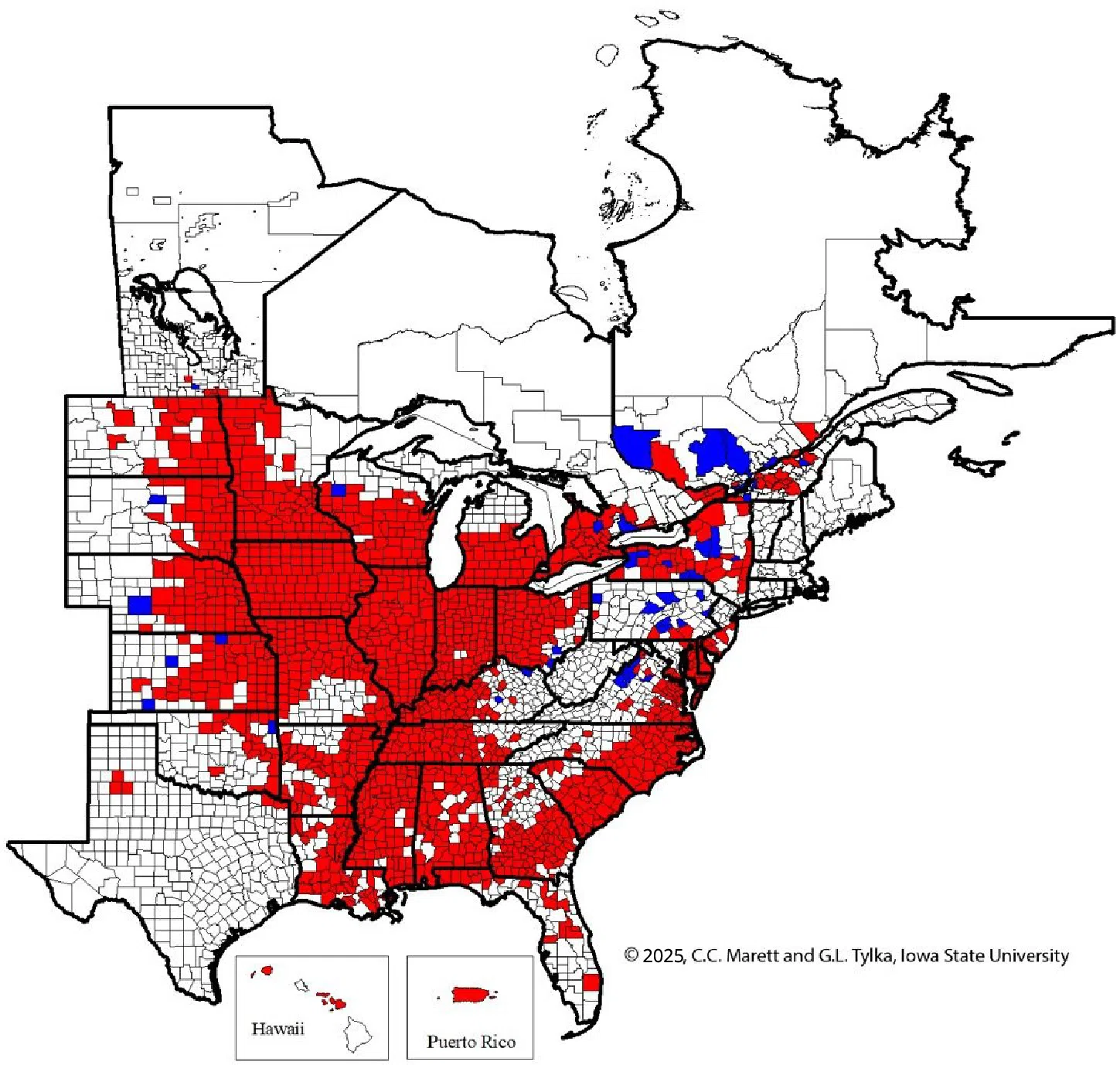Researchers have been updating the map of known soybean cyst nematode distribution regularly since 2000, and with each update, the threat spreads. The latest update, spearheaded by Iowa State University nematologist Greg Tylka, reveals 31 counties in 10 U.S. states reporting SCN for the first time during the 2020 through 2023 timeframe.
In Canada, 10 rural municipalities in Quebec and three counties across Manitoba and Ontario reported SCN for the first time over that three-year span.
Most of the primary soybean-producing areas in the U.S. and Canada overlap the SCN distribution map. In the U.S., SCN is in every county of Illinois and Iowa, the top two soybean-producing states.
SCN costs U.S. soybean farmers more yield than any other pathogen. Losses due to SCN are double that of the next largest pathogenic threat.2 Based on SCN’s ongoing spread, Tylka says, “It’s reasonable to conclude that increased soybean yield losses due to the nematode will follow, if not already occurring in these areas.”
And just because an area is not reporting SCN does not mean fields there are free of the pathogen. “Fields may be infested with the nematode for many years before infestations are discovered,” the report notes.
To combat mounting resistance to PI 88788, The SCN Coalition encourages farmers to work with their trusted agronomic adviser to develop a plan, including:
- Test fields to know your numbers.
- Rotate resistant varieties.
- Rotate to non-host crops.
- Consider using a nematode-protectant seed treatment.
Farmers can get an estimate of what SCN is robbing their bottom line by using the SCN Profit Checker calculator.





Comments